Is the world prepared for future Zika virus outbreaks?
Once a rare tropical disease, cases of Zika virus have now been reported across 89 countries and territories. So, what is Zika, how does it spread and what can be done to protect people against it?

A health worker fumigates against the Aedes aegypti mosquito, a vector of the dengue, Zika, and Chikungunya viruses in Contagem, metropolitan region of Belo Horizonte, state of Minas Gerais, Brazil, on 2 February 2024.
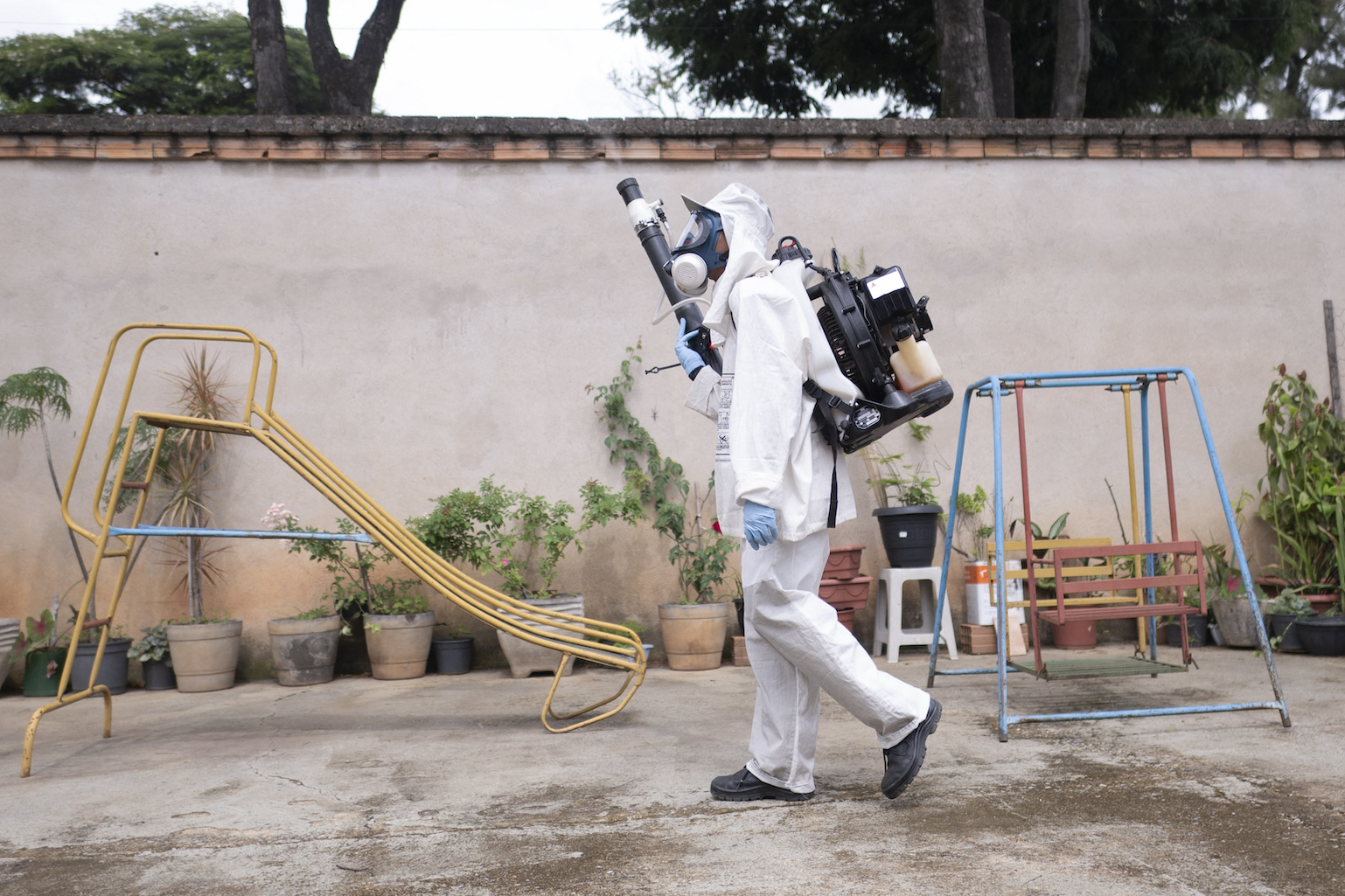
- Zika is an infectious disease transmitted to humans through mosquito bites.
- In most people, symptoms of Zika are mild, however it can have huge health impacts for the unborn babies of infected pregnant people.
- There is no treatment or vaccine for Zika, and most preventative methods focus on stopping mosquitoes biting.
- More research is needed to better understand how Zika spreads and how to prevent and treat it.
Zika is a mosquito-borne disease first discovered in 1947 in Uganda’s Zika forest. For several decades, it was known as a rare tropical disease with only sporadic outbreaks.
However, this changed in the 21st century.
Zika outbreaks have now been recorded across Africa, the Americas, Asia and the Pacific. That includes an outbreak in French Polynesia in 2013 with thousands of suspected cases, and a large epidemic across Latin America and the Caribbean from 2015 to 2016 in which 1.5 million people were infected in Brazil alone. The increasing number of cases led to two important discoveries.
Firstly, although most people had mild symptoms like headaches, fever and joint pain, Zika infection could also cause Guillain-Barré syndrome, a rare condition that can lead to paralysis. Secondly, and most concerning, was the discovery of Zika's impact on pregnant women and their unborn babies.
During the 2015 to 2016 epidemic, it was discovered that Zika can spread from a mother to their foetus during pregnancy. It's estimated to cause adverse outcomes for babies in 5 to 42 percent of infected pregnant women. That includes congenital malformations like microcephaly, where babies are born with a clinically small head, and permanent brain damage. In Thailand, where there were 758 reported cases of Zika in 2023, 13 babies were born with these health issues in the same year. Zika can also cause premature birth, stillbirth and foetal loss.

Rio de Janeiro, Brazil
João was born with microcephaly – he has a smaller head and under-developed brain. This once-rare condition is becoming more common in Brazil because of Zika outbreaks. Many families struggle to cope with the needs of children with microcephaly, and more and more are abandoned – including João. He was later adopted by Marilene and given a loving home.
In October 2015, Brazil reported a link between Zika infections among pregnant women and cases of microcephaly in their newborn babies. The condition can cause long-term physical impairments, but researchers have recently found that certain treatments within the first six months of infancy, such as physiotherapy, can reduce these effects.
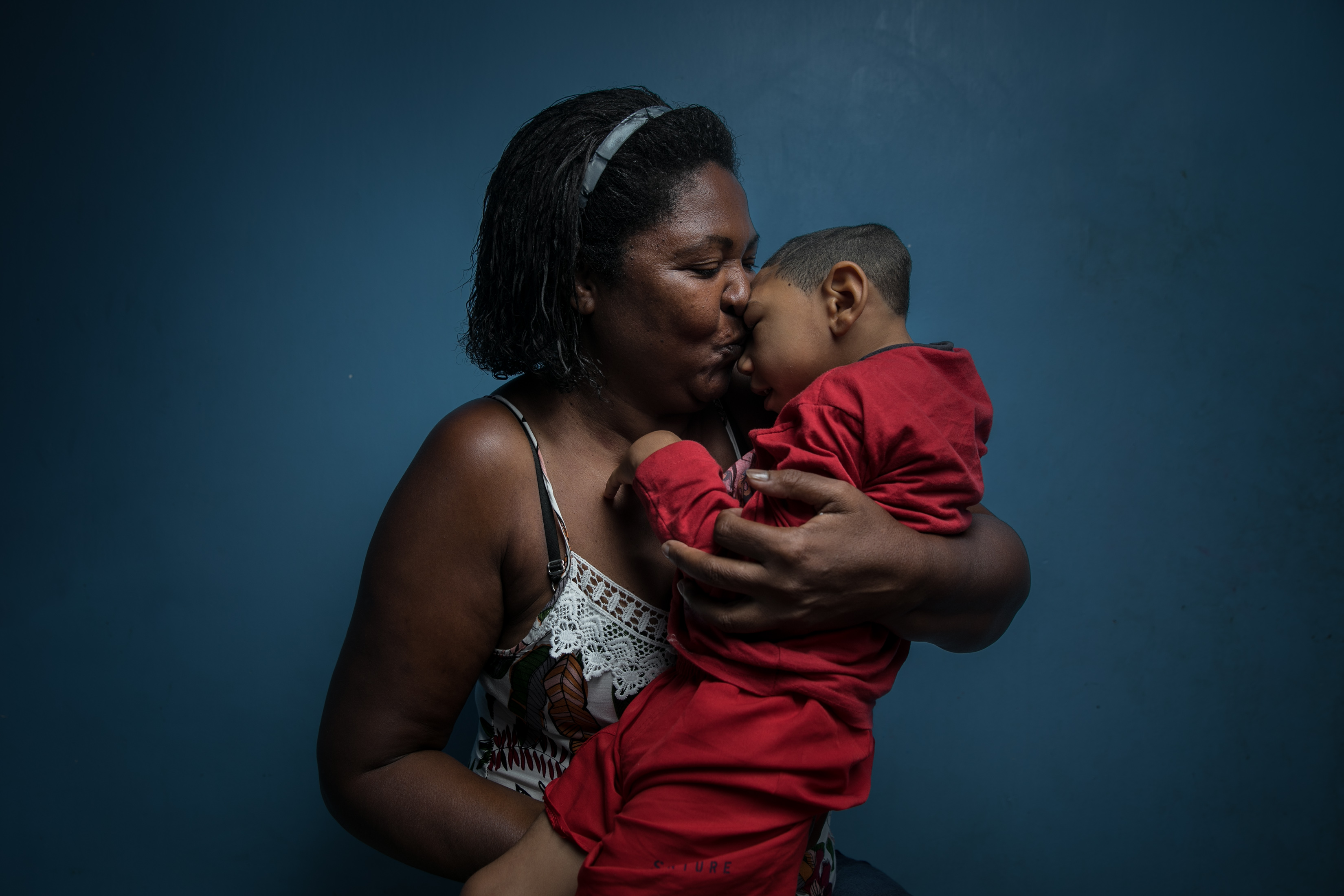
Zika can be transmitted in other ways too. It primarily spreads through the bite of infected Aedes mosquitoes, the same mosquitoes that spread dengue, yellow fever and chikungunya. It can also be spread by sexual contact, blood transfusion – and possibly organ transplantation.
Several factors increase the risk of the disease moving to new places. For example, rising levels of international travel and trade can cause Zika to spread beyond the tropical and subtropical regions where it is commonly found. Meanwhile, it’s estimated that warming temperatures as a result of the climate crisis could create more suitable environments for mosquitoes, putting 1.3 billion people at risk of Zika by 2050.
There’s also evidence that shows Zika can co-circulate in human populations with dengue, and that the viruses cause cross-reactive immune responses. That means an infection with one virus can affect a person’s immune response to the other. But data on how they interact, particularly in the most affected communities, is limited.
We’re funding research to better understand what causes and drives infectious diseases to escalate and the solutions to control their impact.
There are currently no open funding opportunities for Infectious Disease. Learn more about the funding we provide.
The babies born in the 2015 to 2016 epidemic in Brazil are now living with severe disabilities. Researchers have found that physiotherapy during the early infancy months can help reduce the effects of some of these impairments. Yet, no treatment or vaccine for Zika exists to protect babies from the health impacts of current and future infections.
Until recently, the threat of Zika to human health was low and research on the disease was limited.
However, scientists are now searching for a vaccine. For example, the ZPIV vaccine candidate which has completed Phase 1 clinical trials. It has been shown to block Zika virus transmission in animal models when given before and during pregnancy. Another candidate is the VLA1601 vaccine, which is being tested in a Phase 1 clinical trial that will involve 150 adult participants in the US.
As potential Zika treatments are still in the pipeline, the main method to protect people against the disease is through prevention.
Zika-carrying Aedes mosquitoes bite during the day, so bed nets offer limited protection. However, light-coloured clothing that covers the body, insect repellent and window screens can all help to stop the Aedes mosquitos from biting people.
Additionally, stopping Aedes mosquitoes from breeding can help reduce the risk of infection. Traditional methods to prevent this focus on spraying adult mosquitoes with fumigation to kill them and targeting small collections of water where the Aedes mosquitos lay eggs. For example, in water tanks and buckets, and less expected places like old tires and bins.
There are newer methods in development too, such as genetically modified male mosquitoes whose offspring never develop into adults. This research, funded by Wellcome, aims to gradually reduce the population of Aedes mosquitoes.

Marcos has been working with the World Mosquito Program in Niteroi for a year, releasing mosquitoes that carry Wolbachia bacteria. It’s the first day of a second round of releases. His car contains 900 tubes, which are released every 50 metres.
Mosquitoes carrying Wolbachia are less able to transmit Zika and dengue, and, over time, the Wolbachia mosquitoes breed with the wild mosquito population, leading to a decrease in the spread of infection.
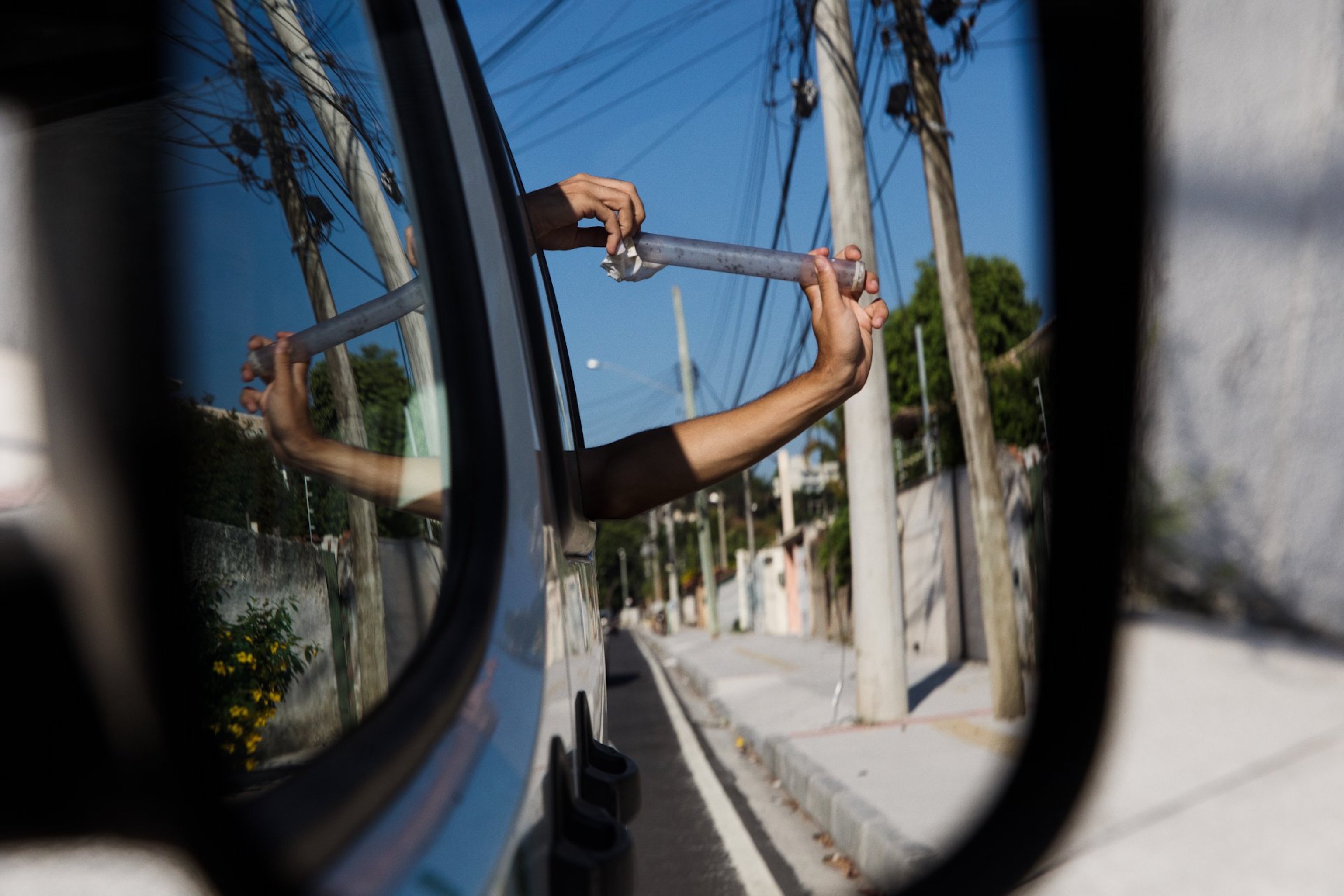

A pregnant woman holds a mosquito net in Cali, Colombia, on February 10, 2016. The Colombian Health Ministry began delivering mosquito nets for free to pregnant women to prevent the infection by Zika virus.
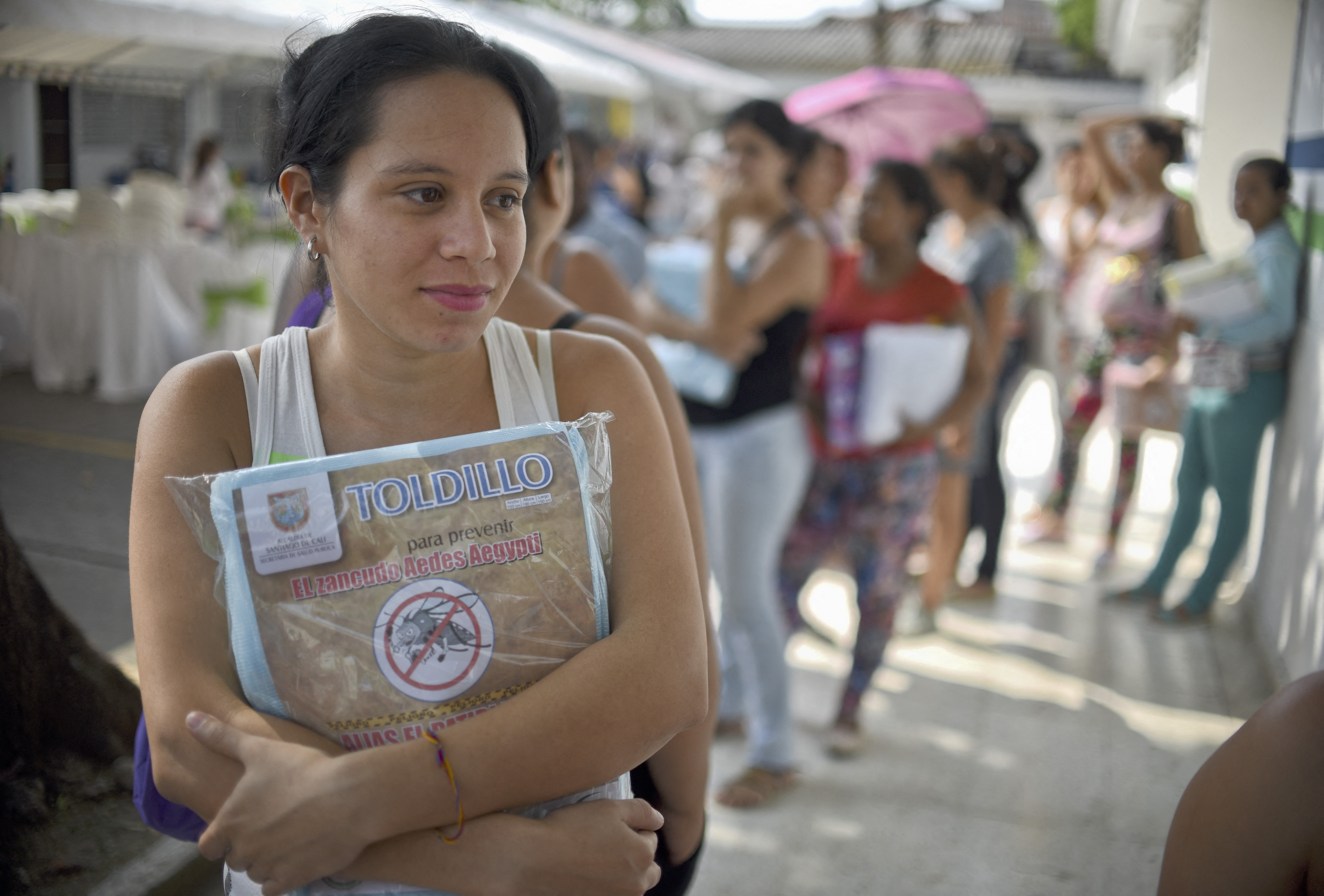

Constant separates reusable tyres at the Solyval waste management site.
On La Réunion, an ecotax is charged on new tyres to encourage people to return used ones to the vendor. Although Solyval collects around 2,500 tyres every day, this is only about 75 per cent of the total sold. The rest are often kept in gardens behind houses or dumped in the streets or ravines around the island, accumulating stagnant water which becomes a breeding habitat for mosquitoes that carry infectious diseases like Zika and dengue. '80 per cent of mosquito breeding sites are created by humans, 5 per cent of which are tyres,' says Solyval’s director, Mr Pincepoche.
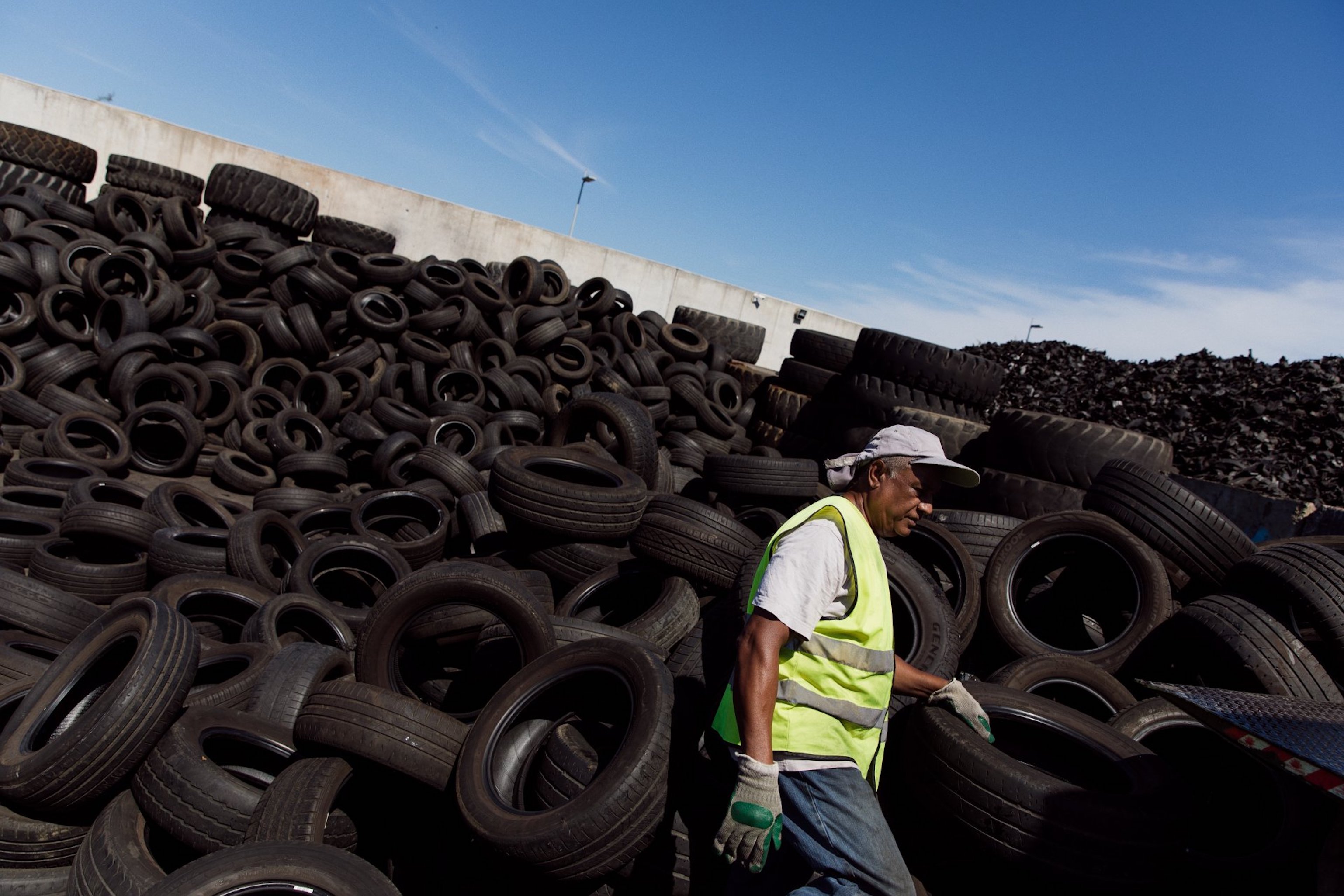
The World Health Organization also has guidelines to prevent Zika from spreading through sexual transmission. For example, contraceptive methods for men and women living in regions with active Zika transmission, and practising safe sex or abstinence throughout pregnancy.
While these preventative methods exist, a challenge to protecting people against Zika is that only one in five people exhibit symptoms of the disease. That means many people are never diagnosed and the disease is difficult to monitor.
More research is needed to better understand Zika, how it spreads and how to prevent and treat the disease. And, alongside this, the world needs to take action to address key drivers of the disease, such as climate change, to limit the number of people at risk.
At Wellcome, we’ve supported many initiatives to help improve our understanding of Zika and protect people against the disease. This includes:
- The World Mosquito Program which releases Aedes mosquitoes that carry Wolbachia, a bacterium that reduces their ability to transmit Zika and other mosquito-borne viruses. The programme, which we’ve helped fund since 2014, has protected over 11 million people in 14 countries. This success has led to regulatory approval for the use of Wolbachia in the USA, Australia and Brazil.
- Funding researchers investigating Zika virus – from a researcher using large datasets in Brazil to study how infectious diseases during pregnancy affect a child’s health, to researchers developing a tool to estimate how changes to climate and land use will affect the transmission of Zika and other diseases caused by infected insects.
- Launching a funding call to improve our knowledge of dengue and Zika spread, immunity and clinical outcomes. We believe that generating data on the epidemiology and burden of these diseases is key to developing effective interventions to treat and prevent them.
We also recognise that the world’s infectious disease research and development ecosystem is failing us. From how research priorities are set, to the manufacturing of products – each stage in the system often reflects the needs of people living in richer countries, rather than the countries most affected by infectious diseases.
Reforming the research and development ecosystem is crucial to protecting people against infectious diseases like Zika now and in the future. That’s why all countries must work together to build an ecosystem that is driven by collaboration and innovation, rather than competition and profit. We believe doing so will help make sure that the tools and treatments available to fight infectious diseases meet everyone’s needs.
Once a rare tropical disease, cases of Zika virus have now been reported across 89 countries and territories. So, what is Zika, how does it spread and what can be done to protect people against it?